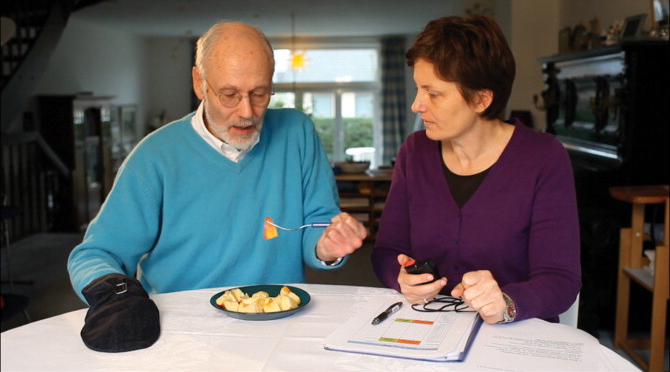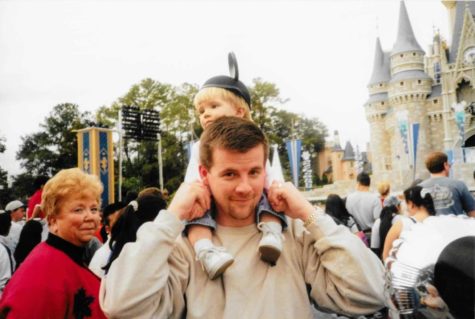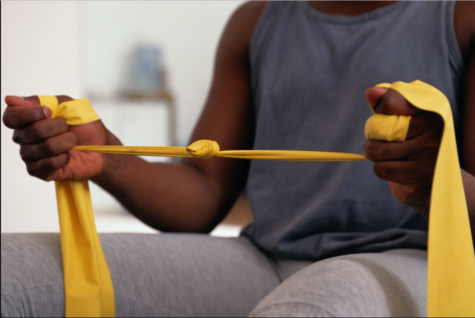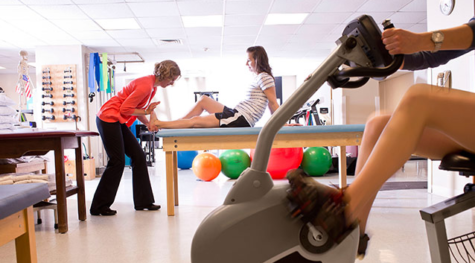Effectiveness of CIMT
On average, someone in the United States suffers a stroke every 40 seconds (“The Internet Stroke Center”). Not only do stroke victims have to deal with the mental trauma of suffering such an injury, unfortunately, serious physical setbacks exist as well. The physical repercussions of a stroke are huge, and often times leave the victims unable to use, or have full function of, their upper extremities; this causes strain on a stroke victim as they are not able to perform everyday tasks on their own. The road to recovery is a lengthy one, and time varies greatly for each patient. Fortunately for these victims, it has been proven that the central nervous system is adaptive, and it will be able to recover some functions (“Stroke Rehabilitation”). While many treatment options exist, and each is tailor made to fit the individual, one stands out in particular. Constraint-induced movement therapy focuses on improving and increasing the use of the more affected extremity while restricting the use of the less affected arm (“Constraint Induced Movement Therapy”). Though difficult to qualify, CIMT is the best treatment for patients with movement loss because it is proven to be more effective than similar rehabilitation and long-term effects confirm success.
The main drawback of constraint-induced movement therapy is that it may be difficult for a patient who seeks this type of therapy to qualify for it. In fact, out of the 759,000 people who fall victim to a stroke annually, only 20 percent will meet the treatment’s criteria (“Stroke Recovery Using Constraint”). That may sound like a shocking number, and it may seem unfair that so many are refused this service, but for good reason. The first qualification for CIMT is the 10X10X10 rule, which is as follows: 10 degrees active wrist extension, 10 degrees active thumb abduction, and 10 degrees active extension of any other two digits on the affected hand (Jackson). This rule is in place because in order to follow the treatment’s daily exercises, the patient must have a basic grasp/release ability, while also being safe for mobility having one hand binded in a cast. It is also difficult to receive this care because of insurance complications. Because this treatment is a bit risky, possibly compromising the safety of a patient, the APTA claims that insurance companies are not as willing to grant insurance as quickly as they would with alternative treatments (“Academy of Pediatric Physical”). With such specific qualifications, and the risk of insurance coverage, it is fair to say that patients may struggle with receiving this treatment.
For those that qualify for constraint-induced movement therapy, the payoff is huge. Stroke patients have a countless number of treatments available to them, but CIMT is proven to be more effective than other treatments available. In a 2005 study, 13 trials compared constraint-induced movement therapy to an alternative treatment and a control 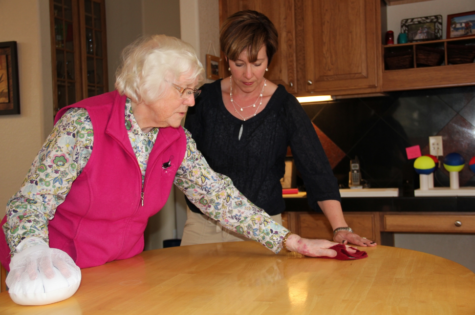 group; the results were significant, and in favor, of CIMT in eight of the 13 trials for positive measures of upper limb function (“Constraint-Induced Movement Therapy”). For an experimental trial, that is an incredibly encouraging outcome in the research of CIMT, proving that it works in several different cases. Constraint-induced movement therapy holds the key to a speedy recovery for stroke victims, though it is not a “quick fix.” In two separate studies one in 2003, and the other in 2006, two weeks of CIMT was shown to significantly improve arm or hand function in patients, with a two year follow-up showing massive improvements on the motor activity log compared with pretreatment and the general fitness group it was tested against (“OT Clinicians’ Perspectives”). Studies provide hope to stroke victims who feel they have lost everything, though the road to recovery is lengthy, and improvement may plateau at times, these studies prove that improvement will come to sight. In fact, results of a 2005 study shows an overwhelming result in favor of CIMT in recovering upper limb function in stroke patients compared with any alternative treatment or no type of treatment at all (“Constraint-Induced Movement Therapy”). The evidence in favor of CIMT effectiveness is overwhelming, and it is clear that this is the best treatment for stroke patients striving toward improvement in their upper extremities.
group; the results were significant, and in favor, of CIMT in eight of the 13 trials for positive measures of upper limb function (“Constraint-Induced Movement Therapy”). For an experimental trial, that is an incredibly encouraging outcome in the research of CIMT, proving that it works in several different cases. Constraint-induced movement therapy holds the key to a speedy recovery for stroke victims, though it is not a “quick fix.” In two separate studies one in 2003, and the other in 2006, two weeks of CIMT was shown to significantly improve arm or hand function in patients, with a two year follow-up showing massive improvements on the motor activity log compared with pretreatment and the general fitness group it was tested against (“OT Clinicians’ Perspectives”). Studies provide hope to stroke victims who feel they have lost everything, though the road to recovery is lengthy, and improvement may plateau at times, these studies prove that improvement will come to sight. In fact, results of a 2005 study shows an overwhelming result in favor of CIMT in recovering upper limb function in stroke patients compared with any alternative treatment or no type of treatment at all (“Constraint-Induced Movement Therapy”). The evidence in favor of CIMT effectiveness is overwhelming, and it is clear that this is the best treatment for stroke patients striving toward improvement in their upper extremities.
In addition to CIMT being undoubtedly effective, long-term effects are prominent in patients who undergo the treatment. In a study by an innovative research center, 15 trials were conducted following patients progress over the initial three months post-stroke; the results show that CIMT has a “clinically meaningful impact on patients’ outcomes for arm-hand activities, self-reported amount and quality of arm-hand use in daily life” (“Stroke Recovery Using Constraint”). While many of the experimental trials mentioned already focus on the initial improvement of these patients, one study in particular sets out to debunk this myth of only initial improvement. A meta-analysis in 2012 found that participants in CIMT experimental groups continued to experience functional improvements for six months post-stroke, strongly challenging previous theories that constraint-induced movement therapy only improves function in a brief window of time (Davis). Perhaps the most important part of the rehabilitation process is finding a treatment that will stabilize the body, and make each day easier. Fortunately for stroke victims, CIMT does exactly that. In a study focused primarily on chronic stroke patients, constraint-induced movement therapy was found to improve movement that not only remain stable for months after the completion of the treatment, but translates well to the improvements of everyday tasks as well (“Stroke Recovery Using Constraint”). Through these damning pieces of evidence, it is clear to see that CIMT is not a quick fix therapy, but rather one that is in it for the long haul.
Stroke is the leading cause of serious, long-term disability in the United States (“The Internet Stroke Center”), but with the help of CIMT stroke victims are granted a shred of hope. Though many do not qualify for this treatment, those that do will experience a truly life-changing rehabilitation. Not only is constraint-induced movement therapy proven to be more effective than other treatment options, in many studies it is also proven to have long-term effects that will benefit the everyday life of a stroke victim. With the help of CIMT, stroke patients across the world will be granted the gift of improved functionality in their upper extremities, one of the most common side effects of a stroke, that others may never get the chance to receive.
Works Cited
“Academy of Pediatric Physical Therapy, APTA.” PediatricAPTA,
pediatricapta.org/includes/fact-sheets/pdfs/Alt%20Therapies%20Fact%20Sheet.pd.
Accessed 19 Mar. 2017.
“Constraint Induced Movement Therapy.” Physiopedia,
www.physio-pedia.com/Constraint_Induced_Movement_Therapy. Accessed 20 Mar.
2017.
“Constraint-Induced Movement Therapy Following Stroke: a Systematic Review of Randomised
Controlled Trials.” The Australian Journal of Physiotherapy., U.S. National Library of
Medicine, www.ncbi.nlm.nih.gov/pubmed/16321129. Accessed 19 Mar. 2017.
Davis, Ashley, et al. CIMT as a Post Stroke Intervention.
commons.pacificu.edu/cgi/viewcontent.cgi?article=1034&context=otpf+.
“The Internet Stroke Center.” The Internet Stroke Center. An Independent Web Resource for
Information about Stroke Care and Research.,
www.strokecenter.org/patients/about-stroke/stroke-statistics/. Accessed 20 Mar. 2017.
Jackson, Janeane. Constraint Induced Movement Therapy.
www.mccc.edu/~behrensb/documents/CIMT.pdf+.
“OT Clinicians’ Perspectives of Constraint Induced Movement Therapy.” Google Books, books.google.com/books?id=9e7aB-vtp0oC&pg=PA18&lpg=PA18&dq=CIMT%2Bsafety&source=bl&ots=sCz7XFZZHc&sig=-3XiICOOdXM5u_IRXTHyDZA0Wck&hl=en&sa=X&ved=0ahUKEwjLoPem8d7SAhXNFsAKHXHWDR0Q6AEIRDAG#v=onepage&q=CIMT%20safety&f=false. Accessed 19 Mar. 2017.
“Stroke Recovery Using Constraint-Induced Movement Therapy (CIMT).”
Neurorehabdirectory, 23 Jan. 2017,
www.neurorehabdirectory.com/stroke-recovery-using-constraint-induced-movement-ther
apy-cimt/. Accessed 20 Mar. 2017.
“Stroke Rehabilitation: What to Expect as You Recover from Stroke.” Mayo Clinic,
www.mayoclinic.org/diseases-conditions/stroke/in-depth/stroke-rehabilitation/art-200451
72. Accessed 20 Mar. 2017.


